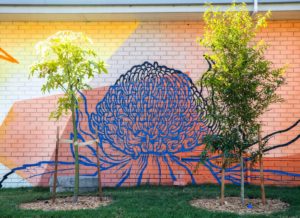Jacobs: Waratah and Wyee stations upgrade
BUILDING PATHWAYS TO A SUSTAINABLE, DECARBONISED WORLD
Our biggest opportunity to reduce carbon emission, affect climate change and leave both the planet and society better than they are today, is through the work we perform for our clients.
In 2021, the world’s attention remains focused on climate change, with the United Nations describing it as a ‘make or break year’ for action. To deliver the carbon emissions reductions required to keep global temperature rise below the 1.5C threshold, we must reduce carbon emissions and embed sustainable outcomes across industry and society on a global and local scale.
At Jacobs, we know that our biggest opportunity to reduce carbon emission, affect climate change and leave both the planet and society better than they are today, is through the work we perform for our clients. We are embracing this responsibility and tackling the challenge head on through the major infrastructure projects we are delivering for our clients and the communities they serve. Every project we work on, no matter what size, presents an opportunity to reduce carbon emissions generated from its design and construction and from ongoing operations over the lifetime of the asset. We are actively working with clients to help them achieve their decarbonization goals, manage risk and improve climate resilience.
Delivered in partnership with Gartner Rose for the NSW Government as part of the Transport Access Program (TAP), the Waratah and Wyee Stations Upgrade projects were great examples of how even small projects can deliver significant sustainability outcomes and contribute to a more climate positive future. The projects were awarded the first ‘Leading’ As Built rating under TAP, achieving numerous positive outcomes for the local environment and community. The project reduced the ongoing energy needs of the two stations by up to 31% and reduced its carbon emissions by 32% (4,367 tCO2e). This was driven by design initiatives including reconfiguring the cooling systems and undertaking cost benefit assessments and market analysis to specify high efficiency cooling systems for station equipment and service rooms. They also achieved a 9% reduction in materials footprint through material saving initiatives and implemented an increase of more than 50% in biodiversity offset requirements across both sites, providing enhanced ecological benefits. Planting was concentrated in the under-utilised space at the front of the stations and, in time, will contribute to cooling the surrounding urban environment. The use of drought-resilient native planting was one of a number of choices made throughout the design process to reduce the future water needs of the stations and deliver a 43% reduction in water use over the lifetime of the asset.
For many organisations, decarbonising their assets and operations can seem like a daunting and complex task. To help clients navigate the challenge, we recently launched our Net Zero Lab, a collaborative and interactive program where we work with clients to understand their carbon footprint, set emission reduction targets, develop and operationalise decarbonisation strategies and manage performance to bring about lasting change.

Transport for NSW, with students from nearby Callaghan College and two local artists (Nick Stuart and Bronte Naylor), completed a new artwork at Waratah Station inspired by local flora and fauna. (Image: Waratah Station Upgrade, Transport for NSW, 2021)
